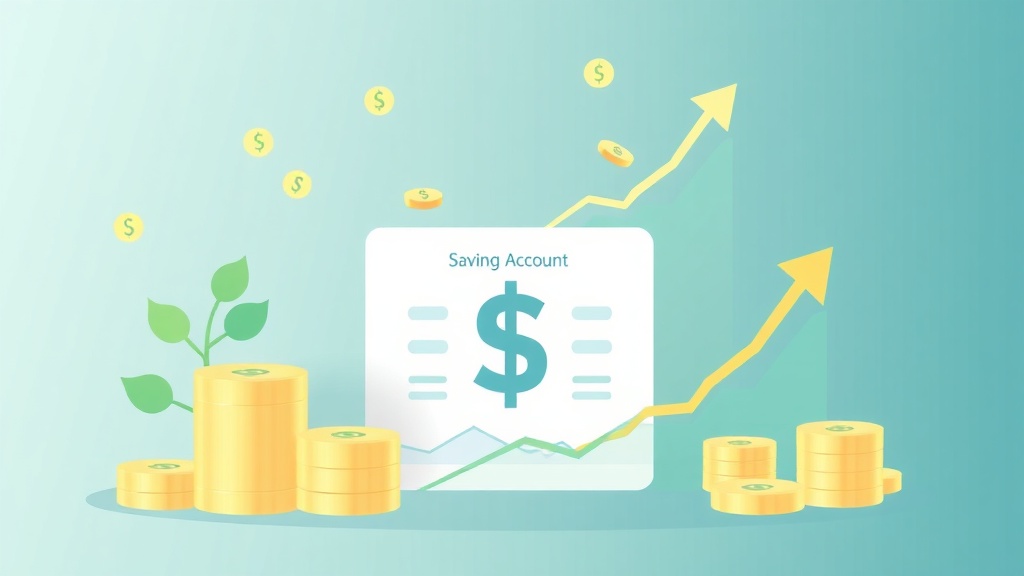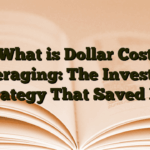How to Invest in Index Funds: The Strategy That Beat Wall Street
Warren Buffett made a million-dollar bet in 2007 that still echoes through Wall Street today. He wagered that a simple S&P 500 index fund would beat the best hedge fund managers over ten years. Not just beat them by a little — crush them.
He won by 38 percentage points.
The world’s greatest investor proved what many suspected but few wanted to admit: you don’t need complex strategies, expensive fund managers, or insider knowledge to build wealth. You need an index fund and the patience to let it work.
I learned this lesson the hard way. After years of picking individual stocks, trying to time the market, and chasing the next big thing, my portfolio looked like a rollercoaster designed by someone who failed physics. Then I discovered what Buffett already knew: boring wins.
What Index Funds Actually Are (Without the Wall Street Jargon)
An index fund is a basket of stocks that mirrors a market index like the S&P 500. Instead of a fund manager picking and choosing stocks, an index fund simply buys everything in the index in the same proportions.
Think of it like this: if you wanted to own a piece of every major company in America, you could spend months researching hundreds of stocks, managing dozens of purchases, and rebalancing constantly. Or you could buy one index fund and own them all instantly.
The S&P 500 includes giants like Apple, Microsoft, Amazon, Google, and 496 other companies. When you buy an S&P 500 index fund, you own a slice of all of them. When the overall market goes up, you make money. When it goes down, you lose money. But historically, over long periods, it goes up.
The numbers don’t lie. From 1957 to 2024, the S&P 500 has averaged about 10% annual returns. That means money doubles roughly every seven years through compound interest — the most powerful force in investing.
Why Index Funds Beat Almost Everything Else
In 2024, only 18% of actively managed funds beat the S&P 500. Let that sink in. Professional investors with teams of analysts, sophisticated algorithms, and inside access to company executives — 82% of them failed to beat a simple index fund.
Over ten years, the success rate drops to around 21%. The longer you extend the timeline, the worse active management looks.
There are three reasons why index funds consistently win:
Fees are brutally low. Index funds charge as little as 0.03% to 0.20% per year. Actively managed funds charge 0.50% to 2.00% or more. Those fees compound against you. A 1% annual fee doesn’t sound like much, but over 30 years, it can cost you nearly 30% of your potential returns.
You own everything. When you buy an S&P 500 index fund, you get instant diversification across 500 companies spanning every major sector. Tech crashes? Your healthcare and consumer goods holdings cushion the blow. Energy tanks? Your tech stocks keep you afloat. This is why building financial stability starts with broad exposure, not concentrated bets.
No one can consistently pick winners. Fund managers who beat the market one year usually don’t repeat it the next. Research shows that only about 20% of top-performing funds stay in the top tier over the following five years. Past performance doesn’t predict future results — except for index funds, which are designed to match the market by definition.
How to Actually Start Investing in Index Funds
The process is simpler than most people think. You don’t need a finance degree, a huge pile of cash, or connections on Wall Street. You need about 20 minutes and a starting amount as small as $100.
Step 1: Choose a brokerage account. You need somewhere to buy your index funds. The major players — Vanguard, Fidelity, and Charles Schwab — all offer excellent index funds with low fees and no minimums for ETF versions. I started with Fidelity because their interface was clean and their customer service didn’t make me want to throw my laptop out the window.
Opening an account takes maybe ten minutes. You’ll provide basic information, link your bank account, and verify your identity. Most brokerages will have you up and running the same day.
Step 2: Pick your index fund. For most people starting out, an S&P 500 index fund is the right choice. It’s diversified, time-tested, and backed by decades of solid returns. Some popular options include:
- Vanguard S&P 500 ETF (VOO) — 0.03% expense ratio
- Fidelity 500 Index Fund (FXAIX) — 0.015% expense ratio
- Schwab S&P 500 Index Fund (SWPPX) — 0.02% expense ratio
The differences between these funds are minimal. They all track the same index and charge nearly identical fees. Pick the one offered by your brokerage and move on. Analysis paralysis kills more investing dreams than bad fund choices ever will.
Want more diversification? Consider a total stock market index fund like VTSAX or VTI. These include small and mid-cap companies in addition to the large-cap stocks in the S&P 500, giving you exposure to roughly 4,000 companies instead of 500.
Step 3: Decide how much to invest. This is where most people freeze up. They wait for the perfect amount or the perfect time. Both are myths.
Start with whatever you can afford after covering essentials and building a basic emergency fund. If you only have $50 to invest this month, invest $50. The important thing is starting. Once you’ve got 3-6 months of expenses saved and your high-interest debt under control, you can increase your investing contributions.
A common rule is to follow the 50/30/20 budget where 20% of your take-home pay goes toward savings and investments. But if you’re just starting, any consistent amount works. Consistency beats size every single time.
Step 4: Set up automatic investments. This is the secret sauce that separates successful investors from wannabes. Automate everything.
Set up automatic transfers from your bank account to your brokerage account. Set up automatic purchases of your index fund. Remove the decisions, remove the emotions, remove the excuses. This is called dollar cost averaging, and it’s the strategy that saved me from my worst investing impulses.
When you invest the same amount regularly regardless of market conditions, you buy more shares when prices are low and fewer when prices are high. Over time, this smooths out market volatility and removes the impossible task of timing the market.
The Biggest Mistakes That Destroy Index Fund Investors
Index fund investing is simple, but simple doesn’t mean easy. Here are the mistakes I see over and over — and the ones I’ve made myself.
Panic selling during downturns. The market will crash. Not maybe, not possibly — it will. When it does, your index fund will drop 20%, 30%, maybe more. Your brain will scream at you to sell before you lose everything.
Don’t.
Every major crash in history has been followed by a recovery and new all-time highs. The investors who won were the ones who either held through the crash or bought more during the sale. The ones who sold locked in their losses permanently.
During the 2020 COVID crash, the S&P 500 dropped 34% in five weeks. People who sold in March missed the fastest recovery in market history. The index hit new highs by August. If you can’t stomach watching your account drop without selling, you either have too much invested or need to reevaluate your timeline.
Trying to time the market. There’s always a reason to wait. The market is too high. An election is coming. Recession fears are mounting. Interest rates are changing. Trade wars are brewing.
None of it matters for long-term investors.
Studies show that missing just the 10 best days in the market over 30 years reduces your returns by roughly half. Since those best days often come right after the worst days, timing the market means you’re likely to miss both the crashes and the recoveries.
Time in the market beats timing the market. Every. Single. Time.
Chasing performance. A tech sector fund returned 45% last year, so you dump your boring S&P 500 fund and chase the hot sector. Then tech crashes, and you sell at a loss and jump into whatever’s hot now. This is how people turn a winning strategy into a losing one.
Sectors rotate. What’s hot today will be cold tomorrow. The beauty of a broad index fund is that you own everything, so you’re always exposed to whatever sector is performing well without having to predict the future.
Paying too much in fees. A 1% expense ratio doesn’t sound like much, but on a $100,000 portfolio over 30 years, that 1% difference costs you roughly $65,000 in lost growth. Keep your expense ratios below 0.20% for index funds. There’s no reason to pay more.
Checking your account too often. The more you check your portfolio, the more likely you are to see red numbers. The more you see red numbers, the more likely you are to panic and make emotional decisions. I check my index funds quarterly at most. There’s nothing I can do about daily fluctuations, so why torture myself watching them?
Where Index Funds Fit Into Your Overall Strategy
Index funds aren’t a complete financial plan. They’re one piece of a larger strategy.
Before you invest in index funds, you need an emergency fund. Life will throw curveballs — medical emergencies, job losses, car repairs. If you don’t have 3-6 months of expenses saved in cash, that needs to happen first. Otherwise, you’ll be forced to sell your investments at the worst possible time to cover emergencies.
Next, think about tax-advantaged accounts. Index funds work great inside Roth IRAs and traditional IRAs, where your investments can grow tax-free or tax-deferred. If your employer offers a 401(k) match, contribute at least enough to get the full match before investing in a taxable account. That’s free money.
If you’re weighing whether to max out your 401k or pay off debt, the general rule is this: pay off high-interest debt first (anything above 6-7%), then start investing. The interest you’re paying on credit card debt will almost certainly exceed your investment returns.
Once you’re investing regularly in index funds, don’t forget to rebalance occasionally. If you started with 100% stocks but want to add bonds as you get older, adjust your allocation every year or so. Most people shift toward more conservative investments as they approach retirement, but when you’re young, an aggressive stock-heavy portfolio makes sense.
What About Other Types of Index Funds?
The S&P 500 is the most popular index, but it’s not the only option. Here are other index funds worth knowing about:
Total stock market index funds give you exposure to the entire U.S. stock market, including small and mid-cap companies. These funds hold around 4,000 stocks instead of 500. The performance difference between the S&P 500 and total stock market funds is minimal over long periods, but total market funds offer slightly more diversification.
International index funds invest in companies outside the United States. About half the world’s market value is outside the U.S., so some investors hold 20-40% of their stock allocation in international funds. I keep about 30% international to hedge against prolonged U.S. underperformance, though it’s absolutely optional.
Bond index funds provide stability and income. As you get older or if you want to reduce volatility, adding bond index funds makes sense. A common allocation is 80% stocks and 20% bonds in your 30s and 40s, gradually shifting toward 60/40 or 50/50 as you approach retirement.
Target-date funds are index funds that automatically adjust their allocation based on your expected retirement date. If you want truly hands-off investing, these work great. They start aggressive and gradually become more conservative as your target date approaches.
The Reality Check: What Returns Should You Expect?
The S&P 500 has returned about 10% annually over the past 70 years. That doesn’t mean you’ll make 10% every year. Some years you’ll make 30%. Some years you’ll lose 20%. Over decades, it averages out to around 10%.
After inflation, real returns are closer to 7-8%. That’s still excellent. At 8% annual returns, your money doubles roughly every nine years. Invest $500 a month starting at age 25, and by age 65, you’ll have over $1.4 million assuming 8% returns.
That’s the power of starting early and staying consistent. Not luck. Not genius. Just time and patience.
But here’s the catch: to get those returns, you have to stay invested through the bad times. The worst 10-year period for the S&P 500 was from 2000-2009, which included two major crashes. Even during that lost decade, investors who held on and kept buying eventually recovered and went on to make substantial gains in the 2010s.
When Index Funds Might Not Be Enough
Index funds are fantastic for building wealth slowly and steadily. They’re not going to make you rich overnight, and they’re not designed to.
If you’re trying to generate income right now, you might also look at dividend stocks or dividend-focused ETFs. These pay regular cash distributions while still providing growth potential.
If you’re interested in more active strategies, that’s fine — just don’t abandon index funds entirely. Many successful investors use index funds as their core holdings (70-80% of their portfolio) and use individual stocks or sector bets for the remaining portion. This gives you the stability of index investing with some room for higher-risk plays.
And if you’re tempted by day trading or options, understand the difference between trading and investing. Trading is a full-time job with a steep learning curve and high failure rate. Investing in index funds is something you can do successfully while working a regular job and living your life.
My Personal Index Fund Strategy
I keep 70% of my investment portfolio in low-cost index funds split between U.S. total market (50%), international stocks (20%), and a small bond allocation (10%). The remaining 30% is in individual dividend stocks I’ve researched and believe in long-term.
Every two weeks when I get paid, a fixed amount automatically transfers to my brokerage and purchases index funds. I don’t think about it. I don’t check if the market is high or low. I don’t try to time it. The automation removes emotion from the equation.
I review my allocation once a year, usually in January. If my target allocation has drifted significantly, I rebalance by shifting new contributions toward whatever has underperformed. That’s it. No complexity. No stress.
This strategy won’t make me a millionaire by 30. But it will make me financially independent by my 50s, which is a hell of a lot better than most people will achieve by chasing the next meme stock or trying to day trade their way to wealth.
The Bottom Line
Index fund investing isn’t sexy. It won’t give you exciting stories at dinner parties. You won’t beat the market, and you won’t get rich quick.
But you will build wealth steadily, reliably, and with far less effort than almost any other strategy. You’ll outperform the vast majority of professional investors without trying. And you’ll do it while spending maybe an hour a year managing your portfolio.
Warren Buffett’s advice for his own family’s inheritance is to put 90% in an S&P 500 index fund and 10% in short-term bonds. If that’s good enough for one of history’s greatest investors, it’s probably good enough for us.
Start small. Start today. Automate it. Then let time do the heavy lifting.






